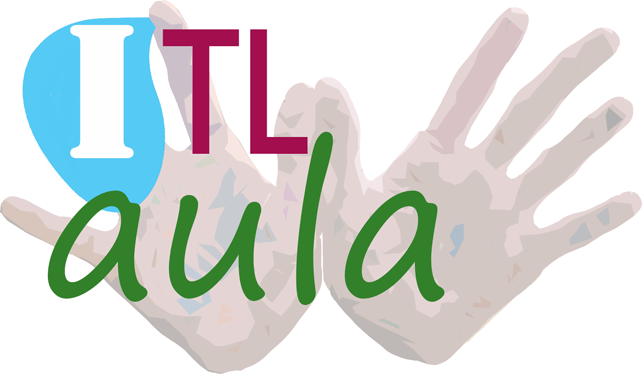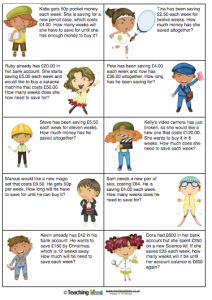 We have used this great worksheet, from the excellent web teaching ideas, that includes ten short problems to practise money and KS1 level arithmetics.
We have used this great worksheet, from the excellent web teaching ideas, that includes ten short problems to practise money and KS1 level arithmetics.
Tag: mental arithmetics
Mental arithmetics game. Friends of number 10 and 20.
Table games, especially those that require the use of dice, quickly develop in the child useful mental calculation skills. It is interesting, as the children grow, to provoke significant mental calculation mementos, and (table) games are the best for this.
We have previously shared a simpler game to practise doubles and doubles +1 with a dice.
This game today is more complex and can be difficult for the younger kids. Still you only need paper, pencil and dice. Use our templates for ready to use tables with friends of 10 and friends of 20.
Friends of 10
Roll 2 dice or one dice twice. Add the results. On the table with numbers look for a number that, when adding or taking away your result, you get 10. Colour or mark that number in the table.For example, you roll the dice twice and get a 3 and 1, that makes 4 in total. You need a 6 to make a 10.You then colour a cell with a number 6 on it. Or you roll the dice and get a 6 and a 5. That´s a total of 11. You need a 1 to take away from 11 to make a 10. You can colour a cell with number 1 in it.
You can add other rules to the game: using a timer to see how many numbers are found in 10 minutes, or play with other players taking turns. If a number box is already colored the player gets another turn.
Friends of 20
Same routine but with the table that has numbers up to 17. You need to roll the dice three times or use three dice.
Play with fractions: read, compare, find equivalent fractions
 We have created this colorful cards to practise fractions. You can download all the worksheets here in one pdf ready to print. They include 28 cards plus templates.
We have created this colorful cards to practise fractions. You can download all the worksheets here in one pdf ready to print. They include 28 cards plus templates.
How to work with the material
– Print and laminate the letters.
– Cut out the cards.
– Decide what you want to work on.
These cards allow you to:
– Read and write fractions
– Compare fractions.
– Sort fractions.
– Add and subtract fractions.
– Complementary Fractions.
Print multiple copies to work addition of fractions with the same denominator.
Math routines
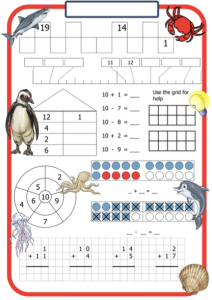 More math worksheets to reinforce numbering and initiate addition and subtraction. First one is sea themed and the second brings the teamwork of the ninja turtles! Click on the pictures to download the worksheets.
More math worksheets to reinforce numbering and initiate addition and subtraction. First one is sea themed and the second brings the teamwork of the ninja turtles! Click on the pictures to download the worksheets.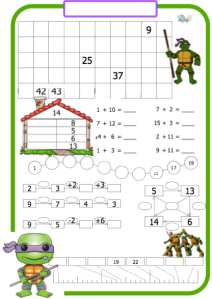
Download here a version of a template to print and adapt the level to the student progress.
Check a previous post with math routines and a pirate theme.
Addition and subtraction booklet – without carry up to number 30.
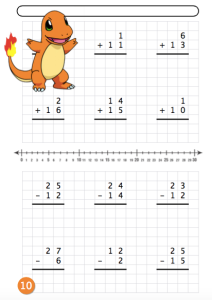 Another booklet to work addition and subtraction without carrying, this time up to number 30. The booklet has ten pages and there is a number line on every page.
Another booklet to work addition and subtraction without carrying, this time up to number 30. The booklet has ten pages and there is a number line on every page.
Addition and subtraction booklet – without carry up to number 20.
Th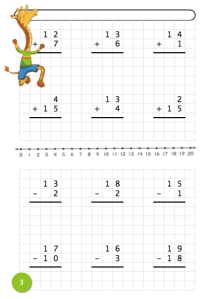 is is a ten page booklet to initiate addition and subtraction without carry. Unlike others found on the net, there are fewer operations and that makes the sheet look clear and attractive to students.
is is a ten page booklet to initiate addition and subtraction without carry. Unlike others found on the net, there are fewer operations and that makes the sheet look clear and attractive to students.
We have included in every page a number line to facilitate mechanics.
Math routines with the pirates
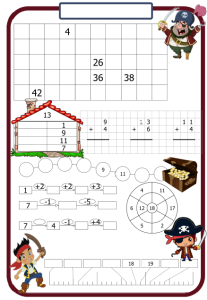 These routines work very well to work and reinforce numbering and initiation to addition and subtraction. And the pirates give all their help!
These routines work very well to work and reinforce numbering and initiation to addition and subtraction. And the pirates give all their help!
The last sheet is easier, for students starting with the routines.
Included also is a version of a template so you are able to make more sheets and adapt the level to the student progress.
Strategies to improve mental arithmetic. Doubles.
When students master the mental calculation of doubles, or doubles plus a simple operation, their artihmetic skills are greatly improved, making the student more successful when facing tasks that will arrive in the next courses.
This is an easy strategy of simple application, ideal for short breaks and that works wonders. One way to use it is to work the doubles routinely some mornings. To do this, have each student take one dice (they can keep a pair always with them to work many other math tasks). The foam rubber type are cool because they do not make noise or bounce so much. Depending on the level of your studen ts, use one or two dice. Then set a timer. Two or three minutes is usually enough. At the start, signal the students to throw their dice and write down on a sheet twice the result obtained. You can download our template here. When the time runs out students will count how many doubles they have calculated and will record the daily result on their doubles sheet.
ts, use one or two dice. Then set a timer. Two or three minutes is usually enough. At the start, signal the students to throw their dice and write down on a sheet twice the result obtained. You can download our template here. When the time runs out students will count how many doubles they have calculated and will record the daily result on their doubles sheet.
After a few sessions, the students master the doubles perfectly. Make it more complex as you want, working triples, use several dice, doubles plus one or minus one …
The unmarked dice are ideal for variations of this type of routine. For instance, give one of these dice to each student in which there is two blank sides, another side with a +1, same with -1, +2 and -2 for example. The student will have to add this dice to another two normal dice and throw the 3 dice together. Then calculate the double taking into account that he/she must do a straight double if a blank side comes up or also add or subtract 1 or 2 to the double.
Goose game with custom made instructions. Maths fun!
This is a version of the Goose Game with simpler instructions that you can change and adapt to your students. You can download a printable A4 sheet here that includes the game-board and the instructions. You will only need a dice and a token for each player.
 The goal of the game is to get the student to recognize the numbers up to 38, identify the missing numbers in the numerical series (monkey’s head) and enjoy learning and respecting the rules.
The goal of the game is to get the student to recognize the numbers up to 38, identify the missing numbers in the numerical series (monkey’s head) and enjoy learning and respecting the rules.
MATERIAL AND PLAYERS
Game-board for the Goose Game.
Dice and one token of a different colour for each player
Players: 2 or more.
INSTRUCTIONS
The Downloadable file includes Instructions.
Monkey: The goose is represented by the monkey. His boxes are: 2, 5, 9, 12, 17, 22, 25, 28 and 33. A player can (only) jump from goose to goose if he/she recognizes what number corresponds to the box. Otherwise it will remain in it as in any other box without advancing.
Kite: Boxes 7 and 20. If a player falls in box 7 he/she jumps to box 20.
Hat: If you fall in a box with a hat, you move back 3 boxes.
Waterfall: Box 14. You are soaked, you lose a turn.
Map: Box 27. You are lost, you can not move from there for three turns unless another player falls and guides you out. If a player saves another when falling in the box, he/she will not be lost, continues to play as normal.
Binoculars: You see your goal, the bananas. You advance to the end!
House of the pirate’s numbers
I have prepared a model of the house of numbers, rather a pirate ship of numerical decomposition until number 10 or until the number that you want to work with, since I am sharing the template.
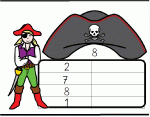
How to work with it:
In the area of the pirate hat you will find a number. That means that on that ship there are that crew. We will tell the students that some of the crew have been captured, the students will calculate how many crew members have been captured in each row/variation to achieve the number under the hat.

If they already know the traditional numbers house, they will not have difficulty performing this.
